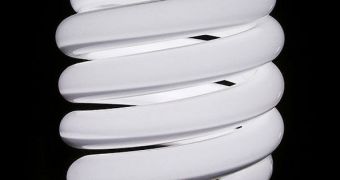Throughout the United States, 2011 will represent the first year when incandescent light bulbs will lose their dominance over the market. Compact fluorescent lights (CFL) and light-emitting diodes (LED) are the new technologies that the public will have to run to, as incandescent bulbs get phased out.
The public does not really have a choice. The old type of light bulbs is being withdrawn from the markets entirely. Some of the largest retailers in the US have already phased out the highly-inefficient technology.
One example is Swedish retail giant IKEA, which removed all incandescent light bulbs from its offer at the beginning of 2011. Home Depot is bound to do the same soon, a spokeswoman announced recently.
The latter will remove the bulbs from its offer as soon as current stocks are depleted. In other words, as soon as the existing light bulbs are bought they will not be replaced on the shelves.
In the state of California, a law that entered effect on January 1 calls for the phasing out of incandescent bulbs, and retailers in the region have already began complying with the new demands.
At a national level, the 2007 Energy Independence and Security Act (EISA) calls for light bulbs of all types to become 25 to 30 percent more efficient between 2012 and 2014, and up to 70 more efficient by the end of the decade.
The main implication of this Act is that incandescent light bulbs are entirely phased out, given how they cannot be innovated to such an extent that they would be able to reach 70 percent efficiency improvements.
“Incandescent bulbs are the least efficient technology we have that’s commonly used in the US. In that regard we absolutely will save energy if we switch technology,” says expert Wendy Davis.
She holds an appointment as a vision scientist at the US National Institute of Standards and Technology (NIST) Optical Technology Division (OTD), report scientists from the Northwestern University.
The two main options that people can select from in replacing incandescent light bulbs are CFL and LED. While the former is cheaper, the latter is more efficient, so the battle between them is going to be a tight one.
It is estimated that a CFL bulb can last several hundred times more than a standard light bulb, and also that it saves up to $40 in electricity costs for its entire service life. LED save less money because they cost more to buy, they they are more efficient overall.
Official statistics show that medium-quality CFL can last for up to 100,000 hours, and consume 85 percent less electricity than a standard incandescent light bulb.
Brightness and color issues that plagued the earliest versions have been worked out, and prices have dropped significantly over the past two years.

 14 DAY TRIAL //
14 DAY TRIAL //